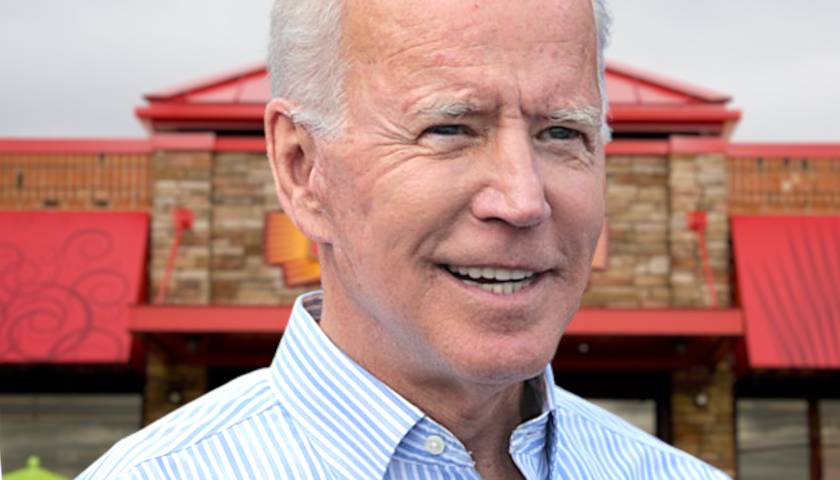by Will Kessler
The recessions currently plaguing several major countries around the world could be what drags the U.S. into an economic downturn of its own, experts told the Daily Caller News Foundation.
Germany announced on Monday that it fell into a technical recession in the fourth quarter of 2023, after reporting its second month in a row of negative growth, following several other top nations experiencing economic difficulties. While the U.S. has managed to avoid a recession due to its size and diverse industries, foreign economic malaise may drag the U.S. economy down through changes to trade and global inflation that would lead to a loss for American businesses, experts told the Daily Caller News Foundation.
“At a time when the U.S. economy is now facing a serious challenge from a commercial property crisis that could lead to a wave of regional bank failures, the rest of the world economy is doing poorly,” Desmond Lachman, a senior fellow at the American Enterprise Institute, told the DCNF. “This heightens the chances that the US will experience an economic recession before the end of the year as its export markets shrink.”
 The U.S. economy has so far avoided a recession, despite predictions by top banks and investors that one will materialize. Gross domestic product (GDP) grew 3.3% year-over-year in the fourth quarter of 2023 and 4.9% in the second quarter, well above typical growth rates.
The U.S. economy has so far avoided a recession, despite predictions by top banks and investors that one will materialize. Gross domestic product (GDP) grew 3.3% year-over-year in the fourth quarter of 2023 and 4.9% in the second quarter, well above typical growth rates.
The U.S. commercial real estate sector currently holds around $2.81 trillion in loans that are set to expire through 2028 and faces increases in interest rate costs and declines in office space demand that have eaten profits, creating obstacles to repayment. Small and regional banks are particularly in danger due to their outsized exposure to commercial real estate debt, which could contribute to another banking crisis if developers were to fail to pay their debts.
“The U.K. and Germany are already in recession as a consequence of the need for higher interest rates to deal with high inflation,” Lachman told the DCNF. “Like the United States, these countries also have commercial property challenges as a result of the increase in working at home and shopping online following the COVID pandemic. That could cause strains in their banking systems and delay any economic recovery.”
The U.K. experienced a similar bout of inflation following the supply shocks from the COVID-19 pandemic, which sent inflation to 11.1% year-over-year in October 2022 and has so far only decelerated to 4.0% as of January, according to Reuters. The Bank of England has placed interest rates at a rate of 5.25% in an attempt to tame high inflation.
Leading economic index from Conference Board fell again in Jan but they've given up on their recession forecast, instead saying growth will only slow; we're facing the reality that if gov't is willing to spend/borrow/print enough, we can avoid a "technical" recession for years… pic.twitter.com/oy1MYb1Hs9
— E.J. Antoni, Ph.D. (@RealEJAntoni) February 20, 2024
“Higher prices have meant falling purchasing power and thus declining consumption,” Peter Earle, economist at the American Institute for Economic Research, told the DCNF. “Many are also experiencing falling business confidence and reduced capital investment. All of these are medium- to long-term effects of massive monetary expansion and heavy-handed, nonpharmaceutical interventions — lockdowns, stay-at-home orders, and so on — to fight COVID.”
China had some of the tightest COVID-19 restrictions in the world as part of the country’s zero-COVID policy, which lasted into December 2022. The country’s economy has since failed to return to growth rates seen before the lockdowns and faces additional pressure from deflation.
World supply chains have continued to face disruptions beyond the COVID-19 pandemic, with global shipping recently experiencing huge hiccups from Iran-backed Houthi militant attacks in the Red Sea, stifling routes through the Suez Canal. At the same time, a drought around the Panama Canal has forced the shortcut to reduce the number of ships allowed to travel through every day, with both disruptions adding extra costs and longer transport times to global shipping expenses.
France has attributed part of its poor economic projection to disruptions from trade through the Red Sea, as well as conflict in Ukraine and the Middle East and economic trouble in China and Germany, according to Reuters. The country projects GDP growth of just 1% in 2024.
“The Chinese economy, the world’s second largest, is now moving to a markedly slower economic growth path as a result of the bursting of its massive housing and credit market bubble,” Lachman told the DCNF. “China’s economic slowing is causing serious problems for its Asian economic partners, including Japan, which has now also slipped into recession.”
China’s real estate sector is currently in crisis after a large percentage of top developers defaulted on their debts, with the country announcing on Tuesday that it was drastically lowering its mortgage reference rate to help boost the sector, according to Reuters. Evergrande Group, a top Chinese developer, was ordered to liquidate more than $300 billion in liabilities after it was unable to create a new restructuring plan.
In connection with China’s slump, Japan’s GDP declined 0.4% in the fourth quarter after falling 3.3% in the third quarter of 2023, according to Reuters. The Japanese economy has long experienced sluggish growth, with interest rates currently in the negative to encourage economic activity.
“The U.S. is at risk of a recession even without other nations sagging,” Earle told the DCNF. “A recession in a nation that purchases large amounts of U.S. exports would mean falling revenue among U.S. exporters. Additionally, if certain nations prioritize domestic consumption over exports, a foreign recession might mean fewer goods and services imported into the U.S. than American citizens are used to.”
Those nations experiencing economic downturns are among the U.S.’ top trading partners, with China, Germany, Japan and the U.K. all in the top seven, according to the Census Bureau. U.S. exports increased amid comparative economic resilience in 2023, while imports decreased as many global trade partners experienced economic turmoil, according to Reuters.
“If there is a silver lining to the world economic malaise, it is that it should help the Fed fight inflation,” Lachman told the DCNF. “We could see a continued easing in international food and energy prices as a result of reduced demand as well as lower import prices, especially on goods imported from China, which must be expected to export deflation to the rest of the world.”
Inflation in the U.S. remains elevated at 3.1% as of January, far from the Fed’s 2% target. To combat high inflation that peaked at 9.1% under President Joe Biden in June 2022, the Fed has set its federal funds rate to a range of 5.25% and 5.50%, the highest rate in 23 years.
“Because of the vast trade networks that both begin and end in the United States, ultimately enough smaller nations seeing economic slowdowns or recessions will impact the economies of larger nations,” Earle told the DCNF. “Unless the recessions into which those nations fall are both shallow and short, effects will eventually be felt by U.S. consumers.”
– – –
Will Kessler is a reporter at Daily Caller News Foundation.




